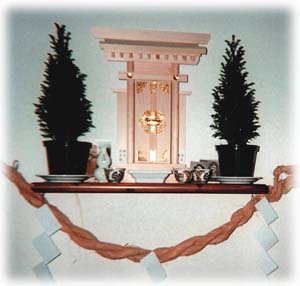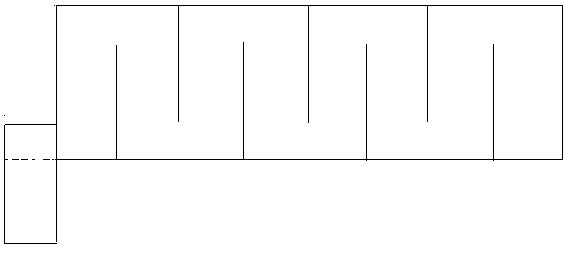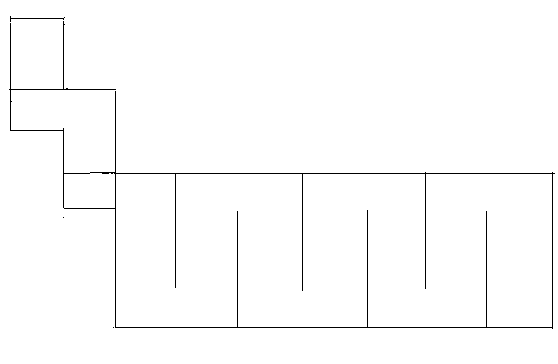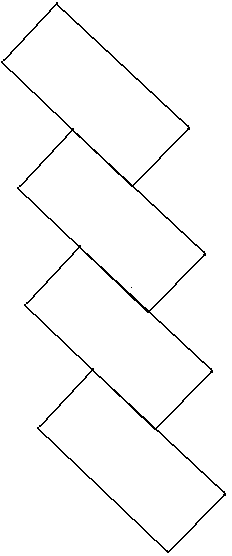Shinto
Ritual in words and Pictures
Shinto is the
national religion of Japan. It is a form of nature worship or Animism with
similarities to Wiccan and Native American, Australian and South East Asian
religions.
Implements
used in Shinto Ritual, A Kamidana, Shimenawa, Miko (Shrine Priestess) Kagura, Shide wands, How to make Shide (zigzag
paper strips), What do
the zigzag strips (Shide) signify?
Implements used in Shinto Ritual on a
Kamidana or household altar
The set of items which may be used on a household shrine or altar. and
is called a "shinki" set.
(1) The tall vases are called "Sakaki Tate" and are for the
evergreen plant,
(2) the lided bottles at the rear are called Heiji and both contain O-miki
(ritually purified sake),
the dish in the center (no number) contains okome (washed rice),
(3) the pointed lidded jar (Mizutama) in the front left contains water
(4) the plate on the right front corner is for salt (Oshio).
(5) Ozen (wooden plinth or sanbo, for a making offerings in front of a kamidana)
6) Miniature model wooden lamps shaped like the stone ones which are found at
shrines.
The most traditional five offerings are therefore rice, rice wine
(sake), water, salt and evergreen branches. They are offered in small, symbolic
quantities, presented in white pottery containers as shown above. Depending
upon the region, season and festival, local produce such as fish or boar might
be offered as well. It is traditional to offer any delicacy to spirits before
the
A Kamidana or house hold altar/shrine (literally "god
shelf") showing items above, the evergreen plant sakaki and Shide (zigzag
strips of paper) overhanging the front of the shrine.
This Kamidana below is one that I sold to a gentleman in Italy. Notice
that, in place of sakaki, the owner has used an evergreen tree indigenous to
Italy.

Shimenawa - rice stray rope adorned with Shide. Shimenawa mark
the boundary between the sacred and the profane. They keep impurities out and
purify the space within. Shimenawa was first used to prevent the sun goddess
Amaterasu from re-entering a cave to save the world from eternal night
(according to the Kojiki). It can be seen therefore that they prevent the
passage of gods. The Shide are attached to the Shimenawa but loosening the
plaiting and inserting them into the rope. Photos
of children making rice straw rope can been seen here. Google image search for
rice straw rope making.
![Daidai Kagura(太々神楽)-03 [formername: CRW_0105]](http://farm3.staticflickr.com/2417/1814196391_d6cb8cce29_m.jpg)
Kagura ritual dance for the Gods as performed as part of many rituals
including Chinkonsai. The dances move in slow precise steps facing the points
of the compass and shaking knives with bells attached at each direction.
A shrine priest waving Shide over the head of a Shintoist in a
typical purification ritual. The wand or harai gushi (sweeping squewer/stick)
that the priest is holding is a wooden pole to which is attached a great many
of the zigzag strips mentioned above. The waving of this wand is one of the
most common ritual actions in Shinto rites. The priest often bows slightly at
about 15 degrees. He waves the stick it in a, not frantic, but brisk enough
moment for there to be a rustling sound from the zigzags of paper. He stops
momentarily at each end of the wave - swing left, stop, right, stop left.
First of all you need about 30 sheets of newspaper sized white paper (or
about 2-3 feet by 1.5.- 2 feet). Cut them in half along their length (then 2-3
feet by 1 foot). Fold them again along there length until one has a strip of
double thickness paper about 2-3 feet by 6 inches. Then make cuts into the
paper strip all along its length at 1 inch intervals, from each of the long
sides at perhaps like this -

The cuts should go about 2/3 away across the strip from both the side of
the fold and the side of the open edge (I have shown the cuts longer than they
should be, but their is variation in the real article). The fold the paper
starting from the first cut in a rotating movement, folding the same end around
and around, so that one ends up with a zigzag of paper, looking like that
attached to the horizontal rope in the picture above.

Folding the folded end around the back, after the second fold the paper
strip will look like this -

Then, rotate around and fold the third strip down in front. Once you
have got used to what I mean by a "rotating movement", Shide
become very quick to fold.
The Shide strips attached to the Shimenawa above have only three
zigs (or zags) but those on a wand will have many more. These zigzags of paper
are then attached by their end, to the top of a 4 foot wooden pole to create a
rustling bundle of zigzag strips (about two thirds of the length of the pole)
on the end of a stick.

Where and when are Shide used?
Shide mark the boundary between the sacred and
the profane when they are attached to rice rope (or nawa to form Shimenawa).
As well as being attached to Shimenawa, they are also used in the fundamental
style of ritual or harai (literally "sweeping") when many
strips of Shide are attached to a pole, which is waved left and then right. Hariai
are purification rituals to remove unwanted impurities and spirits such as that
shown above over the head of a woman above. It is common for Japanese to have
their new car purified with a ceremony where a priest says a prayer and then
makes a few sweeps of the wand over and inside the newly purchased car. It is
also common to have the plot of land where one intends to build a house
purified with a jijin sai (ritual of pacification of [the spirit of] the land).
In the jijinsai ritual, Shimenawa will be erected in a square around the plot,
the Shide wand will be waved over the ground, and rice wine will poured onto
it. Shide are also attached to the fronts of shrines or household altars as
shown in the photograph above.
The Way Shide Function
When Shide are attached to Shimenawa
they act as a sign to mark a boundary. It is very possible that the etymology
of Shide is from Shidesu which means "to signify". It
may be that Shide are fundamentally - signs that signify boundaries. When Shide
are used on a wand in a purification ceremony their action is more explicit -
they are used to sweep spirits away. Perhaps evil spirits are swept away
by the strips in the fashion of a broom. If so then the Shide on the
wand are acting in the same way as those on the Shimenawa - as a barrier to
spirits which can be used to sweep them to one side. Or, perhaps, as I prefer
to think, impurities stick to the strips attached to the wand (rather
like the action of a Duskin brand mop popular in Japan). If so, then Shide work
by a similar principle to omamori, or talismans, sold at shrines which
work by attracting the bad spirit to the omamori itself. This is one of the
reasons why omamori must be replaced periodically, because they become a
receptacle of bad spirts, that would otherwise have been obsorbed by the
bearer. Shide are also offered to the gods. Today they are often attached to
the branches of sakaki that are offered during Shinto rituals.
Bearing in mind that water purification (misogi), which probably has the same
function as oharai sweeping using Shide, is described as a way of gettign rid
of worrisome words, and bearing in mind the fact that shide are essentially blank
strips of paper that are waved over people's heads, and bearing in mind that both
Zen silence and Pure Land chanting in Japanese Buddhism are to clean and silence
(words in ?) mind, it could be that shide are designed for the same purpose.
I find that when a Shinto priests waves these over my head and then dunks my head
into the morass of white paper strips my mind goes pleasantly blank, as if all the
worries and woes and excuses* that fill my self narrative have been swept away.
The Origin of Shide and connection
with witchcraft
It is interesting that the Shide
wand resembles a broom stick and it is very probable that this resemblance is
not coincidental since they are used in a sweeping motion in a purification
ritual meaning "sweeping". This may please witches out there, one of
whom writes "wiccans use brooms for a similar purpose. they are used
to move energy around, to sweep an area clean of any spirits or energies that
might not be protective or friendly to the circle which is being cast.
when the
circle is dissolved, the broom can be used
again to stir the energies and a request is made that the spirits feel free to
move to the place on this earth where they belong. feathers or brooms are
used to clean spirits or energies from a person as well. usually this
process is accompanied by the burning of particular herbs (locally
cedar). Native Americans also use this
process." Historically, however, the
origin of the Shide wand maybe in an tasselled pole type artefact used by Buddhist
priests in China or the sticks with strips peeled from them at one end, used by
the Ainu of Hokkaido (and originally all of Japan).
The Sound of Shide
The sweeping movement of the strips
creates a pleasant rustling sound. This sweeping rustling sound is probably not
accidental. Kagura dance (as shown above) has a similar emphasis on sound in
that the dancers will stop and shake the knives attached with 'jingle bells'.
Together with clapping in the common Shinto form of prayer, and the ringing of
a large bell hanging high up at the entrance to a shrine, Shinto encourages
people to make certain noises, which, in the case of the clapping and the
shrine bell, are said to wake up the Gods. Perhaps the rustling of the Shide
paper strips wakes up the spirits, or perhaps it attracts them. Shide
make an attractive, enchanting sound that seems to come from nowhere, that
hangs in the air.
The Shape of Shide
There are many theories about the
significance of shape of the zigzag strips. Many say that they resemble
lightening. I theorized that Shide were created in such a way that
strips of paper could be torn off easily as a form of totem badge. If you make
a Shide and pull at the bottom you will find that it is easy to tear off one
strip at a time. No one else subscribes to this theory, and in almost all the
rituals that I have seen, no one tears off strips now. The one exception that I
have seen is that people clutch at Shide in various colours at the end
of a village Kagura festival in Takaschiho. In any event Shide are,
after the twin arced gate or torii, and the mirror, a very important
Shinto symbol. They are the symbol, for example, of the International Shinto Organisation.
Comments and questions to -
Timothy Takemoto
Please excuse my use of the above images
and any mistakes that I may have made.